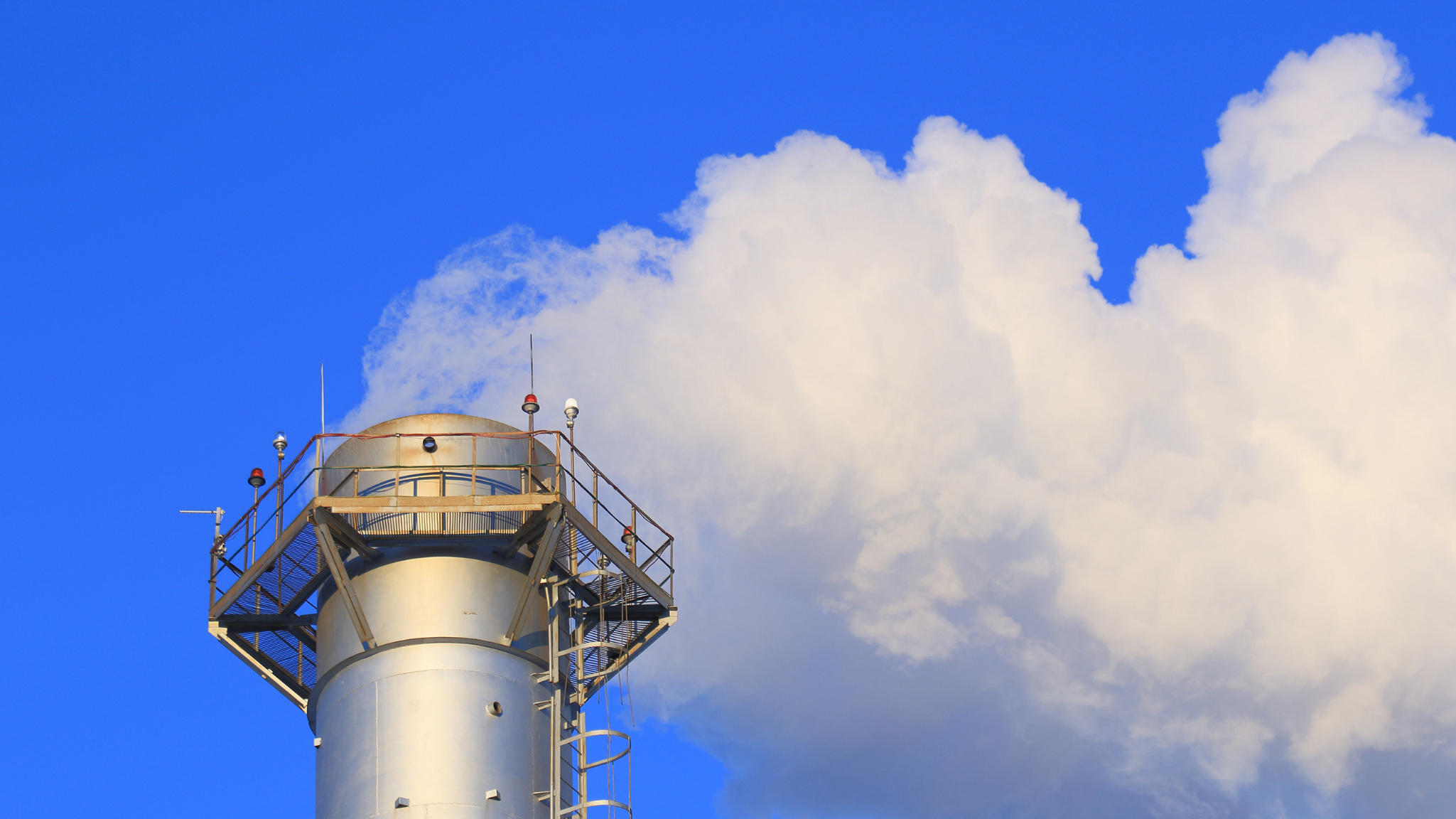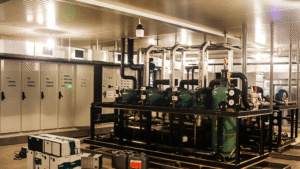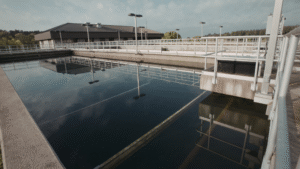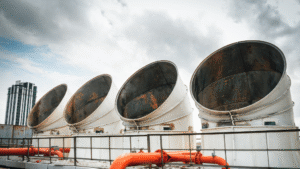Foam problems with boiler systems are more than just a visual nuisance. They signal underlying chemical imbalances and operational inefficiencies that can compromise heat transfer, reduce steam quality, and damage equipment. In industrial steam boilers, especially high-pressure or waste heat recovery boilers, foam formation often leads to boiler water carryover, inaccurate water level readings, and costly system disruptions.
Understanding how foam forms, why it persists, and how to treat it effectively is essential to maintaining boiler efficiency and preventing unplanned maintenance.
How Foam Forms in Boiler Systems
Boiler foam forms when steam bubbles are stabilized by surface-active substances, resulting in a persistent layer of foam on the water surface. Normally, steam bubbles rise, collapse, and release steam. But when contaminants like oils, organic matter, or high concentrations of dissolved and suspended solids reduce surface tension, foaming occurs.
These surface-active agents (organic substances, treatment chemical residues, or oily substances) create a surface film surrounding steam bubbles. This prevents their rapid collapse, encouraging the development of stable foam. The result is that water droplets, salt crystals, or other impurities may be entrained in the steam, causing serious carryover problems.
Operational Impacts of Boiler Foam
Unchecked foam can cause widespread damage and inefficiencies, including:
- Boiler Water Carryover: Foam facilitates the movement of boiler water into the steam system, contaminating turbine blades, heat exchangers, and other downstream components.
- Reduced Steam Quality: Wet steam and steam carried solids reduce performance in process steam applications and increase risk of product contamination.
- Turbine Blade Deposits: Especially in high-pressure boilers, dissolved salts and other impurities can form damaging deposits on turbine blades.
- False Readings: Foam can cause level gauges to show inaccurate readings, leading to overfilling or low-water cutoffs.
- Insulated Heat Transfer Surfaces: Foam layers reduce thermal conductivity, impairing heat transfer and reducing boiler efficiency.
Even advanced or improved steam boiler design cannot compensate for persistent foam-related issues without proper chemical water treatment.
Common Causes of Foam in Industrial Boilers
Several conditions make boiler systems prone to foaming:
- High Concentration of Dissolved Solids or Dissolved Gases: Accumulated total dissolved solids (TDS) reduce surface tension and contribute to foam formation.
- Organic Matter or Oily Substances in Feed Water: These reduce surface tension and form stable films around steam bubbles.
- Improper Construction or Design: Inadequate separators or mechanical steam purifiers allow water carryover into the steam system.
- Load Swings or Sudden Fluctuations in Steam Demand: These disrupt equilibrium at the steam-water interface.
- Soft Water Without Proper Conditioning: May accelerate foaming due to lack of natural inhibitors.
Foam is not limited to any one boiler type. From steam boilers to thermic fluid heaters, all systems are vulnerable if surface tension isn’t properly managed.
Troubleshooting Foam: Step-by-Step Diagnosis
Addressing foam problems with boiler systems requires a structured approach:
- Analyze Boiler Water Chemistry
Evaluate levels of dissolved solids, pH, and contamination from organic materials. Monitor water particles, salt content, and dissolved gases.
Reference: Boiler Water Treatment Guide: From pH Control to Oxygen Scavengers - Check for Contaminant Sources
Review feed water sources, condensate return quality, and recent maintenance activities. In process plants, inspect whether organic matter or oily residues may have entered the system. - Evaluate Operating Conditions
Assess current boiler operating conditions, including pressure, steaming rate, and load cycles. High-pressure boilers with variable loads are more likely to foam, especially in poorly treated systems. - Inspect Boiler Accessories and Mechanical Systems
Look for malfunctioning separators, damaged mechanical steam purifiers, or missing components that help prevent water carryover.
ETI’s Foam Control Strategy: A Proven Approach
At ETI, we tackle foam problems with a combined chemical and engineering solution. Our Anti-Foam Solutions for Industrial Boilers are thermally stable and specifically engineered for high-temperature, high-pressure environments.
Key Benefits of ETI Anti-Foam Solutions for Boilers:
- Thermal Stability: Our products remain effective at high temperatures and resist breakdown under extreme boiler conditions.
- Steam Purity Protection: Formulations minimize chemical carryover and help meet strict purity standards for industries like food processing and healthcare.
- Program Compatibility: ETI anti-foam agents are designed to integrate seamlessly with scale inhibitors, corrosion inhibitors, and oxygen scavengers.
- Application Across Boiler Types: Whether fire-tube, water-tube, or HRSG systems, we have the right formulation for your application.
Learn more about on our blog: Best Practices for Boiler Chemical Treatment Programs
Real Costs of Ignoring Boiler Foam
Many plant managers only realize the impact of boiler foam when it’s too late. Foam-related issues can cause:
- 5–15% increases in fuel use due to reduced heat transfer
- Premature failure of turbine components and heat exchangers
- Downtime for emergency cleaning and maintenance
- Reduced boiler life expectancy due to scale buildup and water carryover
- Process interruptions due to reduced steam system reliability
When foam formation goes unaddressed, these costs add up quickly, especially in process-critical environments.
Prevention and Control: Best Practices
Foam control is not a one-time fix. It requires an integrated strategy that includes:
- Regular Monitoring: Use conductivity, pH, and TDS measurements to track water chemistry.
- Appropriate Blowdown: Avoid excessive blowdown, which wastes water and energy, but ensure TDS levels remain within acceptable limits.
- Feed Water Treatment: Implement high-quality filtration and pretreatment to remove organic contaminants and dissolved solids.
- Anti-Foam Dosing Strategy: Apply anti-foam agents at strategic points in the system, especially during startup, sudden load changes, or post-maintenance cycles.
Learn more on ETI’s Boiler Treatment Chemicals
Targeting the Root Cause of Foam
Boiler foam isn’t just a water treatment issue, it’s a full-system problem that affects steam quality, energy efficiency, and long-term reliability. Plant managers must take a holistic approach to monitoring, chemistry control, and system design to prevent foam from disrupting operations.
Partnering with ETI ensures access to advanced anti-foam technologies, expert technical support, and a proven framework for steam system optimization. Contact ETI today and speak with a water treatment expert.
Explore More from ETI
- Boiler Water Treatment Guide: From pH Control to Oxygen Scavengers
- Boiler Rust Inhibitors: Key Components Explained
Frequently Asked Questions (FAQ)
1. What are the most common boiler problems caused by foam?
Foam can cause a range of boiler problems including inaccurate water level readings, boiler water carryover, wet steam, and deposits on turbine blades and boiler tubes. These issues reduce system reliability and increase maintenance needs.
2. How does reducing surface tension help prevent foaming?
Foam forms when surface-active substances stabilize steam bubbles. By using chemical treatments that reduce the surface tension at the steam-water interface, foam bubbles are broken down more quickly, preventing their accumulation and carryover into the steam system.
3. Can foam damage boiler tubes?
Yes. Foam can carry dissolved and suspended solids into the steam phase, which may deposit on boiler tubes. These deposits reduce heat transfer efficiency, increase fuel consumption, and can cause localized overheating or tube failure.
4. What’s the best approach to troubleshooting foam in boilers?
Start by analyzing boiler water chemistry, especially total dissolved solids and organics. Then evaluate feedwater quality, operating conditions, and mechanical components. Anti-foam chemicals and regular blowdown also help control foaming.
5. Do anti-foam chemicals interfere with other water treatment products?
ETI’s anti-foam solutions are specifically designed to integrate with existing treatment programs—including scale inhibitors, corrosion inhibitors, and oxygen scavengers—ensuring synergy without compromising boiler protection.





